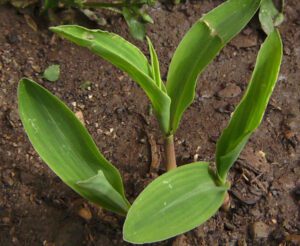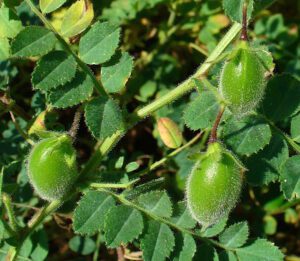Commercial cassava farming is a very common and popular business in many countries around the world. Many people are already doing this business and making good profits from this business. Both demand and value of cassava is very good in both local and international market.
Cassava is actually similar to other tuber crops like yam and sweet potatoes and it is grown mainly for its tubers. The cassava is a woody plant with erect stems and spirally arranged simple lobed leaves with petioles up to 30 cm in length. And the plant produce petal-less flowers on a raceme. The edible roots of the plant are usually cylindrical and tapered and are white, brown or reddish in color.
Currently, commercial cassava farming is done across most of the tropical regions in the world. And today Nigeria and Congo-Kinshasa are the biggest producers of cassava after Brazil and Thailand.
Cassava root and leaves are very nutritious and both have numerous health benefits. Cassava is a potential cash crop and it can achieve good yield and profits with good crop management practices.
What Are The Importance/Advantages of Cassava Farming Business?
Cassava is a very important crop that holds significant importance in various parts around the world (particularly in tropical regions). The versatility, adaptability to diverse environmental conditions, and numerous applications of cassava has made commercial cassava farming a lucrative business venture.
- Cassava farming contributes significantly to the economy on both local and global scales.
- Commercial cassava farming provides a reliable source of income for farmers, especially in the regions where it thrives well.
- The sale of cassava roots and its processed products such as starch, flour, and chips can generate substantial revenue for the local farmers.
- And this business can create employment opportunities along its value chain (including cultivation, processing, transportation, and marketing). This business helps to alleviate poverty and boosts rural economies of many countries.
- Many countries around the world rely on cassava exports to earn foreign exchange. The global demand for cassava products (particularly starch and flour) continues to rise. And it can create a lucrative export opportunity for cassava-producing nations.
- Cassava is a staple food for millions of people worldwide, especially in Africa, Asia, and Latin America. And it is very important in ensuring food security. It is a calorie-dense crop and it provides energy for populations in regions where food scarcity is prevalent.
- Cassava is relatively resilient to drought and can thrive in marginal environments where other crops may fail. This makes it a vital food source in regions prone to erratic rainfall and climate variability. Cassava can be processed into various food products such as garri, fufu, tapioca, and chips, offering dietary diversity and nutrition to communities.
- Along with above benefits, commercial cassava farming has also some other benefits such as environmental benefits by soil conservation, carbon sequestration and biodiversity. Cassava also exhibits traits that make it resilient to climate-related stresses such as tolerance to extreme conditions, adaptability to many conditions and less risk of crop failure.

How to Start Cassava Farming Business?
Starting commercial cassava farming business is relatively very easy and simple, even the beginners can start this business easily. Here we are going to describe more information about starting and operating this business.
Step 1: Learn Practically
First of all try to learn more about this business practically from any of your nearest or local farmer. Having practical knowledge is very important in this business. So, try to learn more about this business practically before starting this business commercially.
Step 2: Complete a Training
Completing a training is also very important for producing more products and generating more profits. You can complete commercial cassava farming training from any of your nearest agriculture extension office or from any of your nearest farmers.
Step 3: Make a Business Plan
Making a good and effective cassava farming business plan is very important. Because a good and effective business plan helps to start and operate the business perfectly. So, try to make a good and effective business plan before starting this business. You can ask for help from an expert for making this business plan if you are a beginner.
Step 4: Select a Good Location
Choosing the right place is also very important for growing cassava. Cassava plants generally grow well in warm, tropical climates. It needs plenty of sunlight and temperatures between 25°C to 29°C to thrive. These plants prefer well-drained soils that are rich in organic matter. Sandy loam and loamy soils are ideal for cassava cultivation.
Cassava grows best at elevations below 1200 meters above sea level. Higher altitudes may experience cooler temperatures, which can slow down cassava growth and reduce yields. Ensure availability of plenty of sunlight to photosynthesize and produce healthy roots. So, try to choose a location that receives full sun for most of the day, with minimal shading from trees or buildings.
Cassava is drought-tolerant, but it still needs regular watering (especially during the first few months of growth). Strong winds can damage cassava plants and reduce yields. So, try to select a location that is sheltered from strong winds, either naturally by surrounding vegetation or by planting windbreaks such as trees or hedges.
Step 5: Prepare Soil Perfectly
Preparing the soil properly is very essential for successful cassava farming business. First of all, start by clearing the land of any debris, rocks, weeds, and previous crop residues. This can be done manually using tools like machetes and hoes or with machinery such as tractors and bulldozers.
It is a good idea to test the soil to determine its pH level and nutrient content. Based on the results, you can make informed decisions about soil amendments and fertilization. Use a plow or hoe to till the soil to a depth of about 8-12 inches. This helps loosen the soil, improve aeration, and facilitate root penetration. During preparing the soil, try to apply as much organic matter as you can (such as compost, manure, or crop residues into the soil).
Adding adequate organic matter is very important. Because, organic matter improves soil structure, water retention, and nutrient availability. Spread a layer of organic matter evenly over the tilled soil and mix it in thoroughly.
Step 6: Consider the Climate Requirements for Cassava Farming
It is very important to understand the climate conditions it needs to grow cassava successfully. Cassava generally grows best in warm climates where temperature ranges between 25°C to 29°C. Cassava growth slows down if it gets too cold, and the plants may suffer heat stress if it gets too hot. So, it’s important to choose a place where the temperature stays within this range most of the time.
Step 7: Select the Right Cassava Varieties
Selecting the right cassava varieties is very important for a successful cassava farming business. Pay attention to some important factors like growth rate, root size and quality, disease resistance, and overall yield.
Step 8: Determine the Propagation Method
The propagation method of cassava plants involves using stem cuttings from mature cassava plants to grow new ones. First of all, select healthy stems from mature cassava plants (usually around 10-12 inches long, with at least 3-4 nodes). Then cut these stems into pieces, with each piece containing at least one node.
Step 9: Purchase Plants
You can purchase cuttings from any of your nearest suppliers or farm. Always try to purchase healthy and disease free cuttings.
Step 10: Planting
Plant the stem cuttings upright in well-prepared soil (either directly in the field or in a nursery bed). It is also important to plant the cuttings at the right depth and spacing to promote good root development. With proper caring and adequate watering, the stem cuttings will sprout and grow into new cassava plants within a few weeks.

Step 11: Caring
Taking good care of the cassava plants is very important. And caring for cassava plants involves several important tasks to ensure healthy growth and good yields. It is essential to provide adequate water to the plants (especially during dry periods), to keep the soil moist but not waterlogged.
Perform regular weeding to prevent competition for nutrients and sunlight. Doing this will allow the cassava plants to grow well. Try to apply organic mulch around the base of the plants, and doing this helps retain soil moisture, suppress weeds, and improve soil fertility.
Fertilize the plants with balanced nutrients, especially nitrogen, phosphorus, and potassium, promotes vigorous growth and root development. Always try to monitor for pests and diseases and take prompt action to control them. Pruning lower leaves and stems can promote airflow and light penetration, reducing the risk of disease and improving overall plant health.
Step 12 : Consider Inter-Cropping
Intercropping involves planting cassava alongside other crops in the same field. This farming method offers several benefits, such as maximizing land use efficiency and diversifying income sources. Cassava can be intercropped with crops like maize, beans, or vegetables, providing additional food or income while the cassava grows.
Step 13 : Prevent Common Pests and Diseases
Cassava plants can be affected by various pests and diseases that can damage or reduce yields. Common pests include the cassava mealybug, cassava green mite, and cassava hornworm. Cassava plants are also susceptible to diseases such as cassava mosaic disease (CMD) and cassava brown streak disease (CBSD). Apply proper pest and disease management practices, such as crop rotation, use of resistant varieties, and timely application of pesticides or biocontrol agents, are essential to mitigate the impact of these threats on cassava production.
Step 14 : Harvesting
Harvesting is the most pleasuring part of commercial cassava farming business. It involves carefully digging up the roots from the soil once they have reached maturity (typically between 8 to 18 months after planting). The foliage of the cassava plant may turn yellow and start to dry out before harvesting (all these indicates that the roots are ready).
Unearth the roots carefully by using a hoe or shovel. And after digging up the roots, they are trimmed to remove the attached stems and leaves. Then you can store the cassava roots for later use or transport to market for sale. Proper timing and handling during harvesting ensure high-quality roots for consumption or processing into various products.
Step 15: Marketing
Cassava marketing is very easy and simple. Actually, you can market cassava in various ways, including selling directly to local markets, wholesalers, or processors. But, before starting, it is very important to identify potential buyers and understand their requirements, such as root size, quality, and quantity. We always recommend determining your marketing strategies before starting this business.
Frequently Asked Questions (FAQs)
People ask many questions about cassava farming. Here we are trying to list the most common questions about cassava production, and trying to answer them. Hope you will find your answer. Don’t hesitate to ask us if you have more questions.
Is cassava farming profitable?
Yes, commercial cassava farming is a profitable business if you can do everything the right way. Initial investment is relatively less as compared to other business, but profits are much higher. Generally, the returns on investment ratio on commercial cassava farming business is between 50% and 300% depending on the yield and the season.
How long does it take for cassava to grow?
As a tropical root crop, cassava plant generally require at least 8 months of warm weather. But under adverse weather conditions (such as cool or dry weather) it can take 18 or more months to produce a crop.
How to start cassava farming business?
Starting commercial cassava farming is very easy and simple. These plants require well-drained and organic content rich soil for optimum production. The soil should not sandy, stony, clayey, or salt-affected.
Does cassava grow in India?
Yes, you can grow this crop in India. But commercial production of cassava is mostly confined to Andhra Pradesh, Kerala, Tamil Nadu and North-Eastern hill region.
How much cassava yield per acre?
World average cassava yield is around 5 tonnes per acre. But cassava yields can reach around 30 tonnes per acre under optimal conditions.
Which month is best to plant cassava?
October to December is the more common time to plant cassava plants.
What Are the Nutritional Value of Cassava?
Cassava is very nutritious and it provides essential vitamins, minerals, and carbohydrates. It is rich in carbohydrates, making it a good source of energy for the body. It also contains dietary fiber, which promotes digestive health and helps prevent constipation. Cassava also provides small amounts of vitamins and minerals, including vitamin C, vitamin B1, vitamin B2, and vitamin B9.
What Are the Health Benefits of Cassava?
Cassava offers several health benefits due to its nutritional content. Here are some notable health benefits of consuming cassava:
- It provides energy from carbohydrates.
- The dietary fiber in cassava promotes digestive health.
- Cassava also contains vitamins and minerals like vitamin C, vitamin B1, vitamin B2, and vitamin B9.
- Cassava is gluten-free. It is suitable for individuals with gluten intolerance or celiac disease.







Thanks for the information. I have future plan for starting cassava production in Nigeria.
Good luck!
Simply desire to say your article is as surprising as always. I grow a few cassava as ornamental plants in my home garden. I usually don’t take any care of them, but they grow and looks fine.
Yes, cassava is a very hardy plant. They can thrive well in less caring also. Good luck!